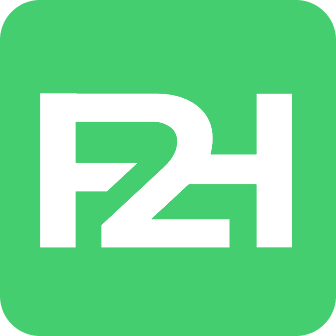We are Figma2html — a passionate and detail-oriented team of designers and developers. From UI/UX to fully functional websites, we craft quality digital experiences with a strong focus on communication, collaboration, and timely delivery. At the core of everything we do is a commitment to excellence and long-term client support.
Figma Careers Growth: How to Land Your Dream Job in Design
In today’s competitive design world, many professionals often wonder how to build sustainable career growth. Among the tools shaping this journey, Figma stands tall. So, what makes Figma careers so appealing? The answer lies in its massive adoption in the UI/UX industry and the growing demand for designers skilled in collaborative, cloud-based workflows.
From UX design interns stepping into the industry, to experienced product designers aiming for leadership, there’s a clear upward path when you’re proficient with Figma. Employers across tech startups, agencies, and Fortune 500 companies treat Figma experience not as a bonus—but as a core requirement.
This guide takes a deep dive into how you can leverage Figma to accelerate your career growth in design. We’ll cover job roles, skills required, portfolio building, interview tips, industry examples, and career ladders. By the end, you’ll know exactly how to stand out, whether you’re entering as an intern or aiming for a senior product design position.
Why Figma Skills Are Crucial for Modern Design Careers
The rise of collaborative software has transformed how teams design digital products. In 2025, few companies still rely on outdated, offline-only tools. Instead, organizations demand professionals who can:
- Work cross-functionally with developers and product managers.
- Share designs in real time, with instant feedback loops.
- Contribute to team design systems and component libraries.
Figma’s ecosystem—with design, prototyping, developer handoff, and FigJam brainstorming—makes it a single solution used across departments. For recruiters, “Figma proficiency” on a CV often signals collaboration skills, technical fluency, and workplace readiness.
Case Note: A survey conducted among top U.S. tech design recruiters in 2024 revealed that 87% of product design job postings listed Figma as a mandatory or preferred tool.
Career Pathways within Figma Careers
Design roles vary depending on company size, but Figma fits into nearly every level of the talent ladder.
1. UX Design Intern (Starting Point)
An ux design intern role allows fresh graduates or career changers to explore how design concepts transform into real-world projects. Interns often:
- Assist in wireframing and mockup creation.
- Conduct basic user research.
- Learn team workflows through Figma files.
Average Pay: $500–$1,500 monthly (stipend range, varies by region).
2. Junior UI/UX Designer
As you transition from intern to junior roles, you’ll handle actual screens, components, and client presentations. Key responsibilities:
- Building Figma components and prototypes.
- Participating in design sprints.
- Iterating based on stakeholder feedback.
Average Pay: $40,000–$60,000/year (U.S. range).
3. Product Designer
This mid-level role involves ownership of larger features or entire product modules. Skills expand beyond visuals:
- Creating and maintaining design systems.
- Running user testing sessions with Figma prototypes.
- Collaborating closely with developers.
Average Pay: $75,000–$110,000/year.
4. Senior Product Designer
Here, leadership skills matter just as much as design talent.
- Overseeing junior designers.
- Guiding strategic direction using FigJam workshops.
- Ensuring consistency across multi-platform products.
Average Pay: $110,000–$150,000/year.
5. Design Manager / Director
Finally, career growth can lead to managing teams, budgets, and design operations. Figma now becomes your operational hub for planning, systems, and mentoring talent.
Average Pay: $140,000–$200,000+.
How to Kickstart Your Journey in Figma Careers
Build a Strong Design Portfolio
Your portfolio is your currency in the design world. A Figma-based portfolio stands out because recruiters can:
- Click through prototypes directly.
- Inspect how you structured components.
- Judge your ability to manage complex collaborative files.
Tips for building one:
- Showcase 3–5 high-quality projects (quality over quantity).
- Explain your role and design decision-making in case studies.
- Provide live prototype links rather than static screenshots.
Gain Internships and Entry-Level Roles
Even unpaid internships (where legally fair) can accelerate growth by proving practical workflow experience. Aim for ux design intern roles at startups, design agencies, or SaaS products.
Leverage Online Learning
Platforms like Coursera, Interaction Design Foundation, and Figma’s own resources offer extensive tutorials. Keep your portfolio updated with exercises like redesigning well-known apps in Figma.
Essential Skills for Growth in Figma Careers
Employers don’t just look for tool proficiency—they want well-rounded designers.
- Core Design Principles: Layout, hierarchy, typography, color theory.
- Figma Mastery: Prototyping, components, auto layout, plugins.
- Collaboration Skills: Communication through comments, FigJam workshops.
- Research Ability: Translating user research into design iterations.
- Basic Coding Awareness: Understanding how developers implement designs.
Pro Tip: Becoming a niche specialist—for example, in motion design using Figma’s prototype animations—can help you stand out in saturated job markets.
How Figma Careers Differ from Traditional Design Tools
Compared to Photoshop, Sketch, or older graphic tools:
- Figma is collaborative, not siloed.
- Design to development handoff is smooth.
- Cross-platform accessibility: Windows, Mac, Linux, and even Mobile.
This makes Figma-trained designers more versatile, reducing onboarding time for companies.
Job Search & Networking Strategies for Design Careers
1. Platforms to Target
- LinkedIn: Set Figma as a keyword in job titles.
- Dribbble/Behance: Publish Figma-based case studies.
- Figma Community: Share free templates to gain exposure.
- AngelList / Wellfound: Explore startup opportunities.
2. Networking
- Join Figma communities on Slack or Discord.
- Attend design hackathons where Figma is the main tool.
- Engage with Figma’s own community webinars.
3. Freelancing as Entry Strategy
Platforms like Upwork or Fiverr often list Figma jobs where small businesses seek designers to create logos, websites, or app prototypes affordably. Building ratings through these platforms can transition into larger roles later.
How to Ace Figma Job Interviews
Expect both practical and behavioral evaluation.
- Practical Tests: You may be asked to redesign a screen live in Figma within a time limit.
- Portfolio Walkthrough: Recruiters will ask why you chose a design decision, not just how.
- Behavioral Questions: Collaboration, feedback response, and time management.
Sample Interview Question: “Tell us how you used Figma to speed up collaboration on a project with developers.”
Pitfalls to Avoid in Your Figma Career Journey
- Over-customizing UI kits → Recruiters want original thought, not just template re-skins.
- Tools obsession without fundamentals → Learning the tool is easy; applying design principles is harder.
- Neglecting soft skills → Many talented designers stagnate because they avoid communication and leadership development.
The Role of FigJam in Career Growth
FigJam isn’t just brainstorming—it can be a career booster. Show you can:
- Run efficient remote workshops.
- Map customer journeys visually.
- Facilitate product roadmaps.
Employers value designers who can think beyond pixels and help teams align strategically.
Mini-Summary
Figma careers offer clear growth for anyone entering or advancing in design. Starting with an ux design intern role, you can scale up to product design, senior positions, and leadership roles. Along the way, your proficiency with Figma makes collaboration easier, reduces hiring friction, and secures your place in an industry demanding adaptable, modern designers.
Conclusion – Turning Figma Skills into Career Success
Figma isn’t just a design tool—it’s a career enabler. By mastering Figma, building a strong portfolio, networking in the community, and demonstrating collaboration skills, you can stand out in a crowded job market.
From interns sketching wireframes to directors leading enterprise-level design operations, everyone benefits from Figma proficiency. If you’re serious about building a future in design, start today by refining your Figma and FigJam skills, producing strong case studies, and connecting with the design community.
Your dream role in design is not just about creativity—it’s about being collaborative, strategic, and adaptable. And Figma is the perfect place to start.
FAQs
Figma careers refer to job opportunities in UI/UX design, product design, and related roles where Figma is the primary tool for collaboration and prototyping.
Yes. Many internships list Figma as a required skill. Showing proficiency and a practical portfolio increases chances significantly.
Interactive Figma prototypes or case study-style presentations are ideal—better than static PDFs or screenshots.
Yes. As of 2025, most tech firms prefer Figma due to its cross-platform accessibility and real-time collaboration.
User research, UX writing, prototyping, motion design, and collaboration skills will accelerate long-term growth.
Absolutely. FigJam demonstrates your ability to lead brainstorming, research analysis, and planning—all key to career advancement.
Entry-level roles average $40k–$60k, product designers $70k–$110k, and senior roles exceed $150k+ depending on region and experience.




